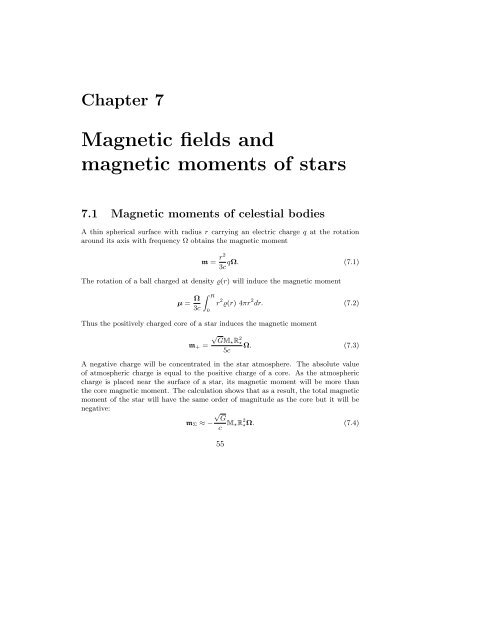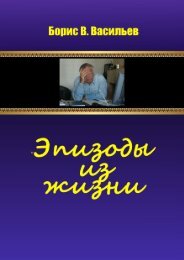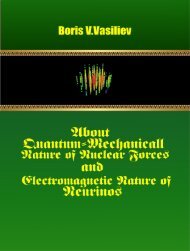VbvAstE-001
Book Boris V. Vasiliev Astrophysics
Book Boris V. Vasiliev
Astrophysics
You also want an ePaper? Increase the reach of your titles
YUMPU automatically turns print PDFs into web optimized ePapers that Google loves.
Chapter 7<br />
Magnetic fields and<br />
magnetic moments of stars<br />
7.1 Magnetic moments of celestial bodies<br />
A thin spherical surface with radius r carrying an electric charge q at the rotation<br />
around its axis with frequency Ω obtains the magnetic moment<br />
m = r2<br />
qΩ. (7.1)<br />
3c<br />
The rotation of a ball charged at density ϱ(r) will induce the magnetic moment<br />
µ = Ω 3c<br />
∫ R<br />
0<br />
r 2 ϱ(r) 4πr 2 dr. (7.2)<br />
Thus the positively charged core of a star induces the magnetic moment<br />
√<br />
GM⋆R 2 ⋆<br />
m + = Ω. (7.3)<br />
5c<br />
A negative charge will be concentrated in the star atmosphere. The absolute value<br />
of atmospheric charge is equal to the positive charge of a core. As the atmospheric<br />
charge is placed near the surface of a star, its magnetic moment will be more than<br />
the core magnetic moment. The calculation shows that as a result, the total magnetic<br />
moment of the star will have the same order of magnitude as the core but it will be<br />
negative:<br />
√<br />
G<br />
m Σ ≈ −<br />
c M⋆R2 ⋆Ω. (7.4)<br />
55













